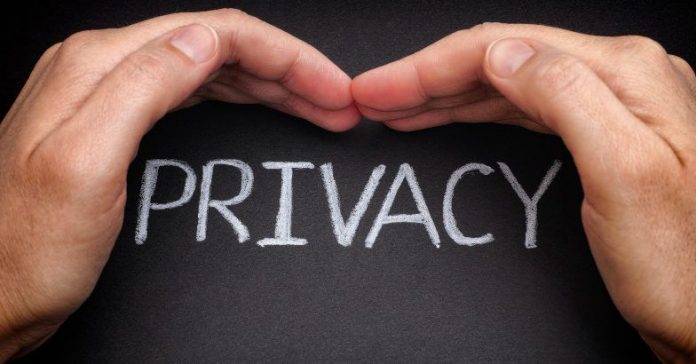This article has been written by Raslin Saluja, from KIIT School of Law, Bhubaneswar. This article analyses the effectiveness of the existing piracy law in compliance with International Legislative Norms.
Table of Contents
Introduction
The advancement in technology and the reach of Intellectual Property has directly affected the market growth and competitiveness. India accounts for being the second largest online market globally with approximately 566 million internet users, of which 251 million are in rural India. All these factors combined have brought along with it a concern for emerging issues of piracy and counterfeits. The status of India as a developing country is making it a global destination that is reportedly getting concentrated on software piracy and counterfeits
Definition of piracy
In the earlier times, piracy was often associated with the act of raiding or looting by the ship-borne looters, known as pirates who would attack and loot the belongings of the nearby dwellers. However, in the modern world piracy is more of a socio-economic crime constituting theft of copyrighted work without the consent or authorization given by the lawful right holder.
We can draw a parallel between piracy in the digital age to that of physical theft as in both situations an economic loss is created. While in the latter an actual tangible belonging is directly looted, the former involves illegal access and distribution of a copyrightable work barring the legal owner from enjoying his moral rights and due profits.
Piracy is generally used for copyrighted goods as defined by the footnote in Article 51 of the TRIPS Agreement. Pirated copyright goods are the copies of goods that have been made without the consent of or authorization by the right holder in the country of production and which are made directly or indirectly from an article where such act would constitute copyright infringement or infringement of a related right under the law of the country of importation.
Types of piracy
Piracy can be classified into five types, those being:
Counterfeiting
It includes illegal acquisition, duplication, and distribution of goods, disk, documentation, and packaging which is identical and deceptively similar to a valid registered trademark in terms of trademark goods of authorized owners.
Internet Piracy
It is the most common act of accessing or downloading a file from the internet, through online software or a compact disc. As before the arrival of the alternative streaming platforms, many unauthorized websites offered cost-free downloads of software, auctions selling illegally obtained software, or transfer of programs made from P2P servers.
End-User Piracy
It involves the user illegally reproducing or using copies of software with no legal authorization. The process requires acquiring software or content without license or copying discs for illegal distribution to users.
Client-Server Overuse
It is a situation wherein the users outnumber the count prescribed by a license to use a central copy of a program in a network.
Hard-Disk Loading
It involves a process of making a sale of new computers with already loaded illegal copies of software and programs onto the hard disks without proper authorization or license.
A report reflected the growth of 10.9% in the Compound Annual Growth Rate (CAGR) in the entertainment industry of India from the financial year 2017-18. The consumption of media has also been on a rise at a CAGR of 9% during 2012-18, almost nine times that of the USA and twice to that of China. This continues even today during the covid-19 times, as most of the world remains confined in their home, India sees a big spike in film piracy. Today, the use of unauthorized websites and torrents is extremely popular as they are the only no-cost option for streaming and downloading the content despite the arrival of online streaming platforms which charge a nominal fee.
Piracy in movies, music, and games is a type of online piracy and is one of the most common illegal acts of accessing, acquiring, copying, reproducing, and then distributing media, without having any authorization permit or consent, or license to do so. It is done through the BitTorrent client service, which binds together various scattered chunks of content from a myriad of users, to download and compile them later to transfer onto the user’s computer. The process is very smooth and difficult to track. Another method is saving the files offline and selling the links via optical discs on the grey market.
Even amongst software piracy, presently, India is among the worst affected countries in terms of piracy and counterfeits. India still figures in the priority watch list of the Special 301 Report issued by the Office of the United States Trade Representative. It is primarily affected in ways of counterfeiting, reselling- which is making of copies of software and storing to sell later, mail order houses – wherein unauthorized copies are made for distribution through the post, bulletin boards- in which telecommunication is used to illegally distribute the content and end-user piracy as described earlier.
Relevant laws and national approaches
Despite the huge surge in piracy infringement, ironically India is not well equipped with any specific legislation to combat the issues at hand. However, there are provisions here and there in several legislations which deal with the matter. These include the Copyright Act, 1957, the Trade Marks Act, 1999, the Indian Penal Code, 1860, the Civil procedure Code, 1908, the Criminal Procedure Code, 1973 and the Intellectual Property Rights (Imported Goods) Enforcement Rules, 2007.
The Copyright Act of 1957 which has been borrowed heavily from and has adopted many provisions of the UK Law, still remains the most prominent and effective legislation to contain software piracy. It provides for both civil and criminal proceedings to be initiated under the Act for infringement. It includes civil remedies such as Section 55 for the institution of suit for infringement coupled with injunction, damages, or accounts of profits. Infringement suits along with Mareva injunction, Jon Roe Orders, and or Anton Pillar Orders as the case may be. Suit for actual damages as well as exemplary or punitive damages can also be filed for the aforementioned purposes.
Furthermore, criminal remedies under the Section 63 and 63A of the Act are penalized with a fine within Rs.50,000 to Rs 2,00,000 and imprisonment of not less than 6 months which may extend to 3 years, and with imprisonment of a term not less than 7 days and which may extend to 3 years and fine for Rs. 50,000 which may extend to 2,00,000 respectively.
Similarly, a suit can be initiated under Section 27(1), 27(2) of the Trade Marks Act, 1999 along with Mareva injunction, Jon roe Orders, and or Anton Pillar Orders and suit for actual or punitive damages. As for criminal remedy, Section 103 of the Act is at our disposal.
The Indian Penal Code, 1860 does not have an explicit defining provision, however, Section 28 deals with counterfeit which involves cheating under Section 415 of the Act.
Besides these legislations, the Government has been mindful of this threat and has been actively involved along with its various departments to apply their initiative at policy levels. Various improvements at the legislative and administrative levels have been made for effective results and execution.
National Intellectual Property Rights Policy, 2016
India has been proactive towards building a robust protection mechanism for strengthening the enforcement of IPRs. The introduction of the National IPR Policy in 2016 is one such instance. It has brought about profound changes with the aim of promoting innovation on one hand and upholding the economic development of the IP on the other. The Policy strives to create IP awareness through its objective 1 and objective 6 to combat piracy offline and online. Moreover, it also aims to promote the creation, commercialization, and enforcement of IPs. Objective 3 of the Policy suggests amendments in the Cinematographs Act, 1952 for the inclusion of penal provisions for illegal duplication of films.
Some other steps to be followed to tackle the issue of piracy are:
- Increased coordination and surveillance among the several agencies to guide and provide instructions on strengthening management and execution steps;
- Sharing of network and best action plans at a universal level;
- Analyzing the extent and impact of IP violations in various sectors; analyzing complications related to jurisdictional issues among enforcement authorities; and
- Introducing suitable tech-adaptive solutions for curbing digital piracy. To have fact-finding programs in collaboration with stakeholders to form effective real-time solutions.
The Cell for IPR Promotion and Management (CIPAM)
The Cell for IPR Promotion and Management (CIPAM) has also been formed under the supervision of the Department of Industrial Policy and Promotion, Ministry of Commerce and Industry, Government of India. It acts as an extension and a national centre of attention for the WIPO Technology and Innovation Support Centre program and has taken impeccable measures for strengthening public consciousness and awareness for effective discharge of Intellectual Property Rights.
To that end, the Film and Television Producers Guild of India and Viacom18 in association with CIPAM, are producing sets of videos for educative purposes including animation videos for creating effective visuals on anti-piracy to be shown before the screening of a movie in theatres as a part of the campaign to create awareness about piracy. CIPAM has collaborated with the National Internet Exchange of India and Maharashtra Cyber Digital Crime Unit (MCDCU) which produced effective results by suspending more than 300 infringing websites, having over 186 million of traction and traffic per month.
Anti-piracy campaigns
CIPAM also promotes anti-piracy animated videos to educate small children and academic institutions to instill IP rights awareness from a young age. Some of it is done in the form of cartoon characters as created by Nickelodeon videos. India has also found its first IPR mascot “IP Nani” (“Nani” means maternal grandmother in Hindi), which has helped immensely in creating awareness, especially among young children, in a visually engaging and appealing form. Amongst this, many videos have been created and produced in association with the European Union Intellectual Property Office (EUIPO).
CIPAM’s had also started an IP awareness program back in 2017 in association with the International Trademark Association (INTA) which has managed to reach over 100 schools. An annual IP competition called IPRISM is also organized to involve college and university-going students in its awareness campaign. So far, the numbers suggest the establishment of more than 100 IPR Cells at various Indian colleges and universities, along with anti-piracy and Intellectual Property Right awareness campaigns that have been successfully conducted in more than 10,000 academic institutions with a reach of over 200,000 students; 100,000 college students and faculty members, and over 2,700 rural students through satellite communications.
Effective awareness and enforcement of IPR can only be done by the involvement of legislation, the judiciary, and members of society at large. To that extent, an enforcement toolkit has been formed by CIPAM, in collaboration with the Federation of Indian Chambers of Commerce and Industry (FICCI) to help the police authorities so as to effectively deal with crimes involving Intellectual Property, especially, copyright piracy and trademark counterfeiting.
The toolkit lays out:
- Relevant legal information,
- Steps and requirements for registering a complaint, and
- Steps, requirements, and guidelines of search and seizure for Intellectual Property crimes.
The toolkit has been distributed to all the police departments at the state level in which regular training programs are organized by the experts for the police officials to give them an overview of all domains of IP and related aspects.
Government initiative and Judicial approach
CIPAM has also been involved with WIPO and National Judicial Academy, India (NJA) in working towards organizing training and awareness programs on IPRs for the convenience of the high court and district court judges. Among other initiatives by the Central and the State governments include conduction proactive raids and timely checks, the inclusion of anti-piracy measures in the draft e-commerce policy with the use of AI technology for intermediaries to place measures in order to prevent the online distribution of such content, or disabling access to such websites and identification of rogue infringing websites, to have a national cybercrime reporting portal which is the Ministry of Home Affairs of the GOI initiative.
Judiciary’s direction and approach have also framed the jurisprudence concerning the methods curbing the phenomenon of online piracy in India. In a recent case of UTV Software Communication Ltd. v 1337X.TO and Others the concept of “dynamic injunction” was introduced by the Delhi High Court empowering the rights-holders to issue blocking orders to ISPs without having to obtain a judicial order to do so. The judge allowed the plaintiffs to directly approach the Joint Registrar of the Delhi High Court to injunct a similar website by virtue of an extension of the previous injunction order granted to another website. The Court being influenced by Singaporean law observed that to address the threat of piracy, it can permit the plaintiff to implement the mirror/redirect/alphanumeric websites.
The court in its attempt addressed the significance of judicial scrutiny of such directions and thus, required the plaintiff to file an affidavit that would confirm that the newly challenged website is a mirror/redirect/alphanumeric website of the impugned website with supporting evidence to the satisfaction of the Joint Registrar. Pursuant to the Registrar shall issue directions to the ISPs to disable access in India to such mirror/redirect/alphanumeric websites in respect of the issued orders.
The Hon’ble Court also suggested the Ministry of Electronics and Information Technology (MEITY) of the GOI indulge in exploring the possibility of a feasible method to blocking the websites as well as informing the users to avoid viewing/downloading such illegal material or otherwise face the liability and penalty in the form of fines.
Conclusion
The various organs of the Indian government including the judiciary, police force, and the MEITYindustry have shown tremendous cooperation and have come together in their efforts to tackle the issues of piracy together. The strategies implemented seem to be working referring to the various reports available. Although there is still a lot to look forward to in curbing the menace of piracy, India is moving in the right direction so far with its policies. Furthermore, future developments in the anti-piracy movement stand awaited.
References
- https://www.lawyered.in/legal-disrupt/articles/7-objectives-indias-new-ipr-policy/
- https://www.mondaq.com/india/copyright/901978/combating-copyright-online-piracy-in-india-government39s-initiatives-and-judicial-enforcement
- http://www.brandsnbonds.com/updates/intellectual-property-right/a-note-on-anti-piracy-laws-in-india/
https://t.me/joinchat/J_0YrBa4IBSHdpuTfQO_sA
Follow us on Instagram and subscribe to our YouTube channel for more amazing legal content.
 Serato DJ Crack 2025Serato DJ PRO Crack
Serato DJ Crack 2025Serato DJ PRO Crack











 Allow notifications
Allow notifications



